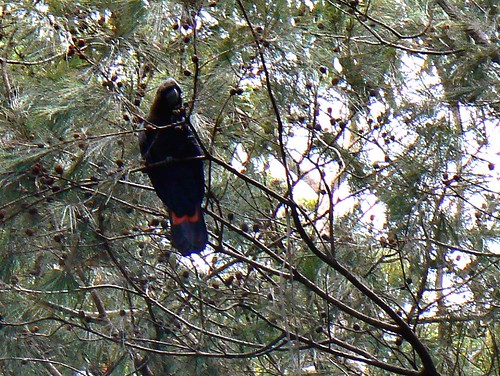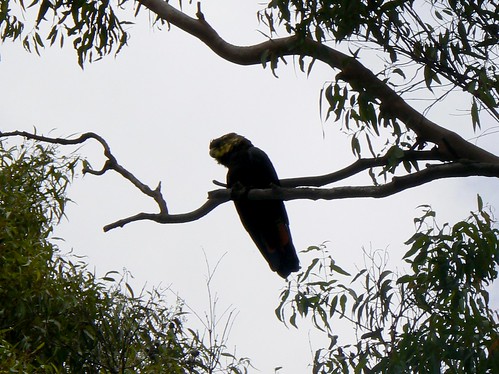
Calyptorhynchus lathami is variously listed as threatened and vulnerable, in large measure because its Allocasuarina habitat has been substantially reduced.
The female has irregular yellow blotches on her head and a red tail panels, while the male lacks the yellow and has less red on the tail. According to Simpson and Day's Field Guide to the Birds of Australia, the species can be both nomadic and sedentary, and their description of the call, "soft, wailing 'tarr-red'," certainly seems accurate.
I've planted a number of Allocasuarina in the garden to supplement the mature specimens already here, so I hope the Glossy Blacks will long find our home a good haven and she-oak restaurant.
The female has irregular yellow blotches on her head and a red tail panels, while the male lacks the yellow and has less red on the tail. According to Simpson and Day's Field Guide to the Birds of Australia, the species can be both nomadic and sedentary, and their description of the call, "soft, wailing 'tarr-red'," certainly seems accurate.
I've planted a number of Allocasuarina in the garden to supplement the mature specimens already here, so I hope the Glossy Blacks will long find our home a good haven and she-oak restaurant.

4 comments:
I regulaly see a huge flock of the yellow tailed black cockatoo on the Hume highway between Goulburn and Marulan! Populations of the red tail are stablising in Meroo national park, I'm told.
I've seen the yellow tailed black cockies down in the Southern Highlands. Much noisier, as I recall! Good to hear about the Meroo N.P. populations.
Such lovely creatures!
I think you are so lucky!
So do I, Charles. I love living here among the birds--and other native fauna!
Post a Comment